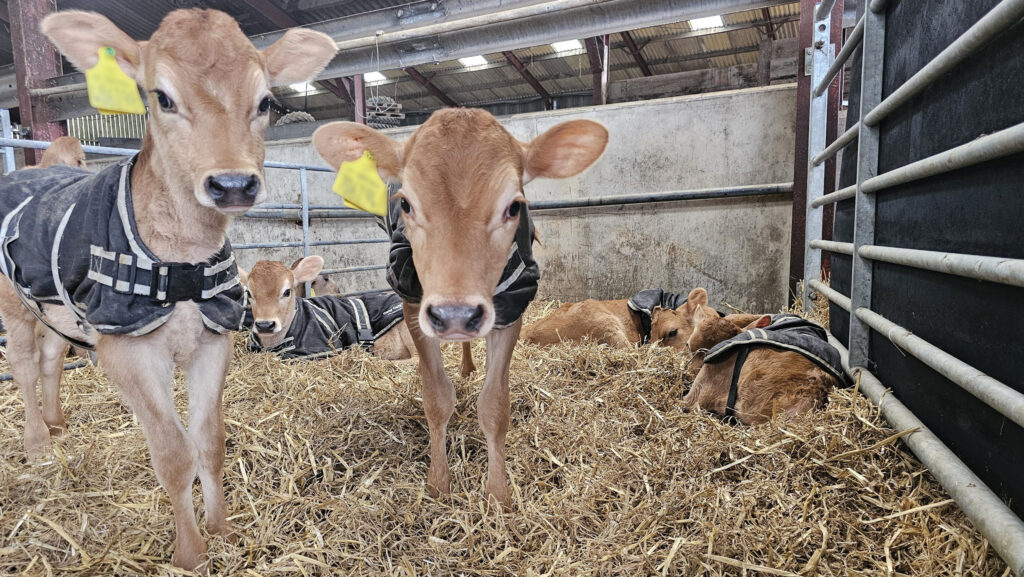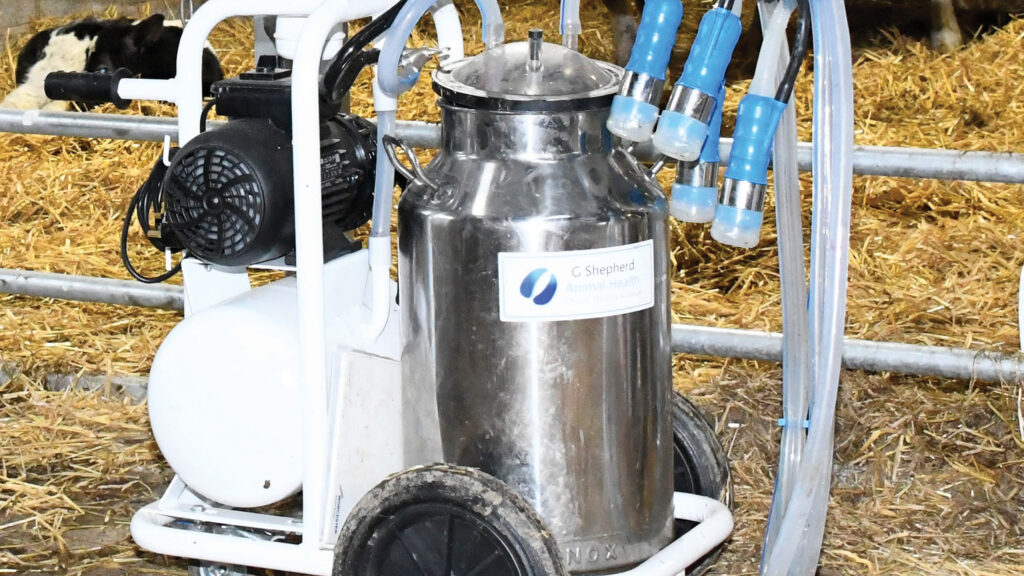Why portable milkers can ease stress at calving
 © George Morgan
© George Morgan Using a portable milking machine in the calving pen is the easiest and fastest way to harvest a cow’s first colostrum and avoid having to move a newly calved cow.
“Cows are often a bit unsteady on their legs after calving – and they might have nerve damage or borderline milk fever – so this reduces the risk of them slipping on concrete,” says vet Graham Shepherd, the founder of G Shepherd Animal Health.
“You could run a cluster on a vacuum line from the parlour through to a next-door calving pen, but you would have to start up the whole parlour just to milk one cow – potentially in the middle of the night.”
Time and quality
Harvesting colostrum as soon as possible after calving is important, as this is when the antibody content is highest.
Graham cites US research by Sandra Godden (2019), which shows that waiting 12 hours after calving until the first milking causes immunoglobulin (IgG) levels to fall by 36%.
“If you don’t harvest colostrum until the next parlour milking, you lose the quality.
“Plus, the calf’s ability to absorb immunoglobulins falls at 5% an hour, so if it doesn’t suckle or has to wait for its first feed, it will be worse off, as that drink will be lower in IgG and also less absorbed,” he explains.

Graham Shepherd’s Mini Milker © Graham Shepherd
Portable milkers (mostly made in Turkey) have been around for a decade and range in cost from £1,100 to £2,600 including VAT.
Graham’s “Mini Milker” model is bought by smallholders and people milking goats in the field, as well as beef suckler herds and large dairy units.
The machine runs off a standard 230V supply, and its two large wheels and a third, braked wheel make it easy to move to the cow.
The shells are stainless steel, and although the receiver has a 40-litre capacity, Graham says that typically the amount of first colostrum is only 6-8 litres.
Anything more is usually of lower quality because of the dilution effect. “So the advice is always to measure colostrum quality and feed that first colostrum then and there,” he advises.
Block-calving use
Welsh dairy farmer George Morgan has seen an uplift in colostrum quality since he started using a portable milker for his 300-cow spring block-calving herd. He can give calves a first feed within an hour of birth.
As a result, he sees fewer scouring calves.
“We milk mainly Jerseys and might get 4-5 litres of first colostrum off a good cow and two litres from a heifer,” he says.
“We occasionally test it using a Brix [refractometer] and, when we milk cows as quickly as possible after calving, the reading is over 30% [22% is equivalent to 50mg/litre of IgG].
“You can definitely see the levels drop if you leave the cow longer for milking.”
George uses the portable milker at the shoulders of the calving block on Fardre Farm, near Rhyl. His 5,000-litre herd calves in 10 weeks, starting in mid-February, with 10-15 cows a day at peak.
Having checked the calving yard at 10pm each night, and with morning milking not until 6.30am, he finds being able to milk without having to switch on the parlour is less stressful.
“We don’t want to set the parlour up. It’s [much more] handy to get the cow into the crush beside the calving yard [to milk her].
“I would say that in a season we milk 50 cows with it, mostly at the beginning of the block, but sometimes a couple of stragglers at the end.”
